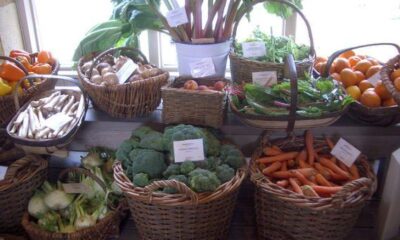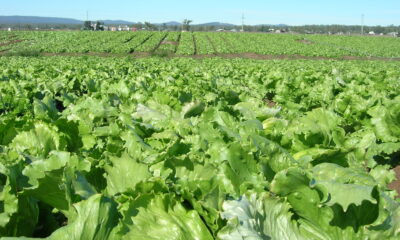

Features
How to Source Sustainable and Healthy Food for Your Family
The food industry is one of the most polluting on the planet and things must change before it’s too late. It all starts by making better food choices and working harder on knowing where your food comes from. You must reduce your carbon footprint by reducing the distance food has to travel before it gets to your plate, and you must ensure that it was produced sustainably too.
Doing all of this can be hard when you have a large family with discriminating tastes to feed, but it’s still possible. Here’s how you can source sustainable and healthy food for your family.
Choose Responsible Providers
Try to buy from providers that practice sustainable practices. Make sure that they’re reliable, however. Use sites that review the top providers in various sectors, such as Top10, as this is the best way to compare products and services. You’ll be able to see which services are the most reliable and some background information on each provider to see if they align with your vision.
Reduce Food Waste
To eat sustainably, look at how much food you waste. It’s estimated that the average American family wastes about 30% of the food they buy every year, which is astonishing.
All of this waste contributes to greenhouse gas emissions. That’s because most wasted food either ends up being incinerated or in landfills where it will start producing methane, which is very harmful to the environment.
Try to keep food waste to a minimum. Start by creating a food journal and mark down everything you and your family are eating at home during the week. Also, take note of your family’s favorite dishes. All of this will allow you to start meal planning and prepping.
Meal prepping is a great way to reduce waste and is also extremely convenient. Once you start doing it, you’ll always have something to eat in the fridge and will know exactly how much you need to make of anything. You cannot rely on your vision when prepping meals, however. Use a measuring scale so you can weigh every ingredient and buy precisely the quantities you need.
Use Sustainable Transportation and Shop Close to Home
When you think about it, there is no real reason to take your car to buy groceries if you live right next to a grocery store. If you need to transport a lot of things, you could go for multiple trips and use more sustainable transportation like a bicycle with a basket. You could also ask someone in the family to come with you so you can carry more stuff home.
Another option would be to get an eclectic scooter. This is one of the most sustainable modes of transportation that you can use and will allow you to carry lots of groceries without getting tired.
Be careful to not travel large distances for grocery shopping unless it’s necessary. If you want to go to multiple places for specials, see if any of these stores have a price match policy so you can buy everything at one place, or see if you could go using public transportation instead.
Grow Your Food
Planting crops can be a great way to reduce your carbon footprint and save at the same time. Depending on where you live, you could grow crops all year long, but you can still benefit from this if you can only grow crops seasonally. That’s because you can always transform produce so you can extend its shelf life and enjoy the fruits of your garden during the winter.
Tomatoes can be turned into a sauce if you want to preserve them even longer. Things like celery, onions, and cucumbers can be pickled, while other crops can be cut and frozen. Some crops can also be dried like beans and other legumes, as well as certain fruits.
You don’t necessarily need a garden to plant food. You can grow tons of fresh herbs on a windowsill, even vegetables like watercress, so look at your options and see what would work with your setup.
Stop Buying Pre-Packaged Foods
You should also try to reduce the amount of pre-packaged food you buy. The more packaging a product has, the more waste it’ll generate. Pre-packaged and often heavily transformed food is energy-intensive to produce. This is why you need to look at what you could make yourself and buy the raw ingredients in bulk.
There’s no reason to buy things like frozen fries or pizza when they can easily be made from home. You can even make things like chips from scratch, and you’d be surprised at how delicious they can be. So don’t be afraid to think out of the box and look at your basket next time you go grocery shopping to see if you could prepare anything yourself.
There are tons of things you can do to reduce the impact of food production and consumption on the environment. The best part is that most of these methods will allow you to save money as well, so that’s a win-win.


 Environment10 months ago
Environment10 months agoAre Polymer Banknotes: an Eco-Friendly Trend or a Groundswell?

 Environment11 months ago
Environment11 months agoEco-Friendly Home Improvements: Top 7 Upgrades for 2025

 Features9 months ago
Features9 months agoEco-Friendly Cryptocurrencies: Sustainable Investment Choices

 Features10 months ago
Features10 months agoEco-Friendly Crypto Traders Must Find the Right Exchange





























